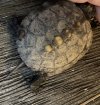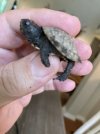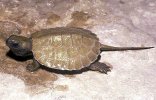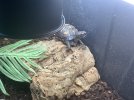McMazz
New Member
Hi everyone, I’m new to the forum. I joined because my wife just came upon a baby tortoise in the garden. The tortoise is either injured or has a deformed left front foot. He or she was under a plant, partially dug in on the right side (the side with good feet and claws). Active and alert, indeed moves quite quickly, no signs of lethargy. Not even sure if he’s a tortoise or a box turtle.
My question is whether we should keep the tortoise due to its bad front foot. Or should we let him go back to the wild and take his chances? We’d have let him go if it weren’t for the deformed/injured foot.
There’s no blood or anything, as you can see from the pics. Thanks in advance!
My question is whether we should keep the tortoise due to its bad front foot. Or should we let him go back to the wild and take his chances? We’d have let him go if it weren’t for the deformed/injured foot.
There’s no blood or anything, as you can see from the pics. Thanks in advance!




